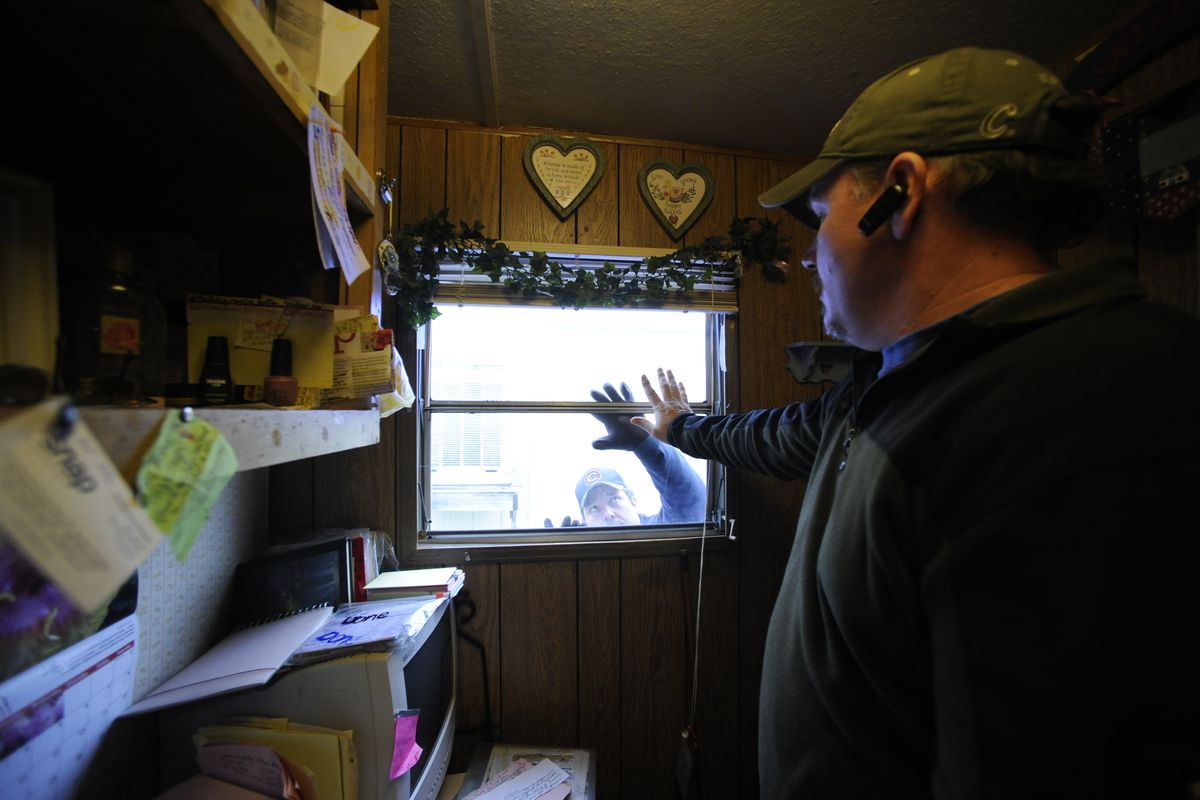Making lives warmer, one house at a time
SNAP crews ‘working nonstop’ to weatherize homes

Spokane winters can be pretty uncomfortable when you live in a 1973 mobile home.
The wind will cut through cracks under the windows that don’t quite close all the way, said mobile home owner Richard Hernandez.
“So we had to keep the heat up high,” said the 62-year-old retired truck driver, who lives on a small pension and Social Security.
But this week things warmed up considerably for Hernandez when a SNAP work crew wrapped things up at the North Side residence.
The Hernandez home is one of 300,000 low-income residences that have been weatherized across the United States as part of the American Recovery and Reinvestment Act of 2009, Energy Secretary Steven Chu announced this week.
The $5 billion program is halfway through President Barack Obama’s stated goal of weatherizing 600,000 homes, reducing energy consumption and saving families an average of $400 on their heating and cooling bills in the first year alone.
Washington is well ahead of the game, having weatherized more than 8,500 residences, 1,300 more homes than the state expected to improve with its recovery act allocation of nearly $60 million, said Commerce Department spokesman Mark Porter.
SNAP weatherized 574 Spokane-area residences last year, including 474 jobs financed by more than $3.2 million in recovery act funds.
“Our goals are to make residences affordable and safe,” said Chris Davis, SNAP director of housing improvements.
The private nonprofit social service organization employs a 20-member crew, including electricians, carpenters, laborers and a plumber.
SNAP also has hired independent contractors to help weatherize 40 to 50 homes a month.
“We’ve been working nonstop,” said SNAP employee Mike Townsend, who tested Hernandez’s mobile home for energy efficiency on Thursday after having installed a new front door, windows and insulation, among other improvements.
Before Townsend’s crew arrived, the residence was leaking air at a rate of 2,900 cubic feet per minute, Townsend said.
The target rate after weatherization was 900 cubic feet per minute.
On Thursday, with a few more things to tweak, Townsend’s instruments showed the leaks had slowed to 1,100 cubic feet per minute.
To qualify for weatherization, a household income must be at or below 200 percent of the federal poverty level or 60 percent of the state median income, whichever is greater.
Tenants who live in apartment buildings also are eligible if their landlords agree to certain conditions, including maintaining the property as affordable housing.
Hernandez waited a year after requesting weatherization assistance before a crew was available to do the work.
On Thursday, he said he could already feel the difference in his home and hoped he would see substantial savings in his heating bill, which he said has been more than $100 a month.